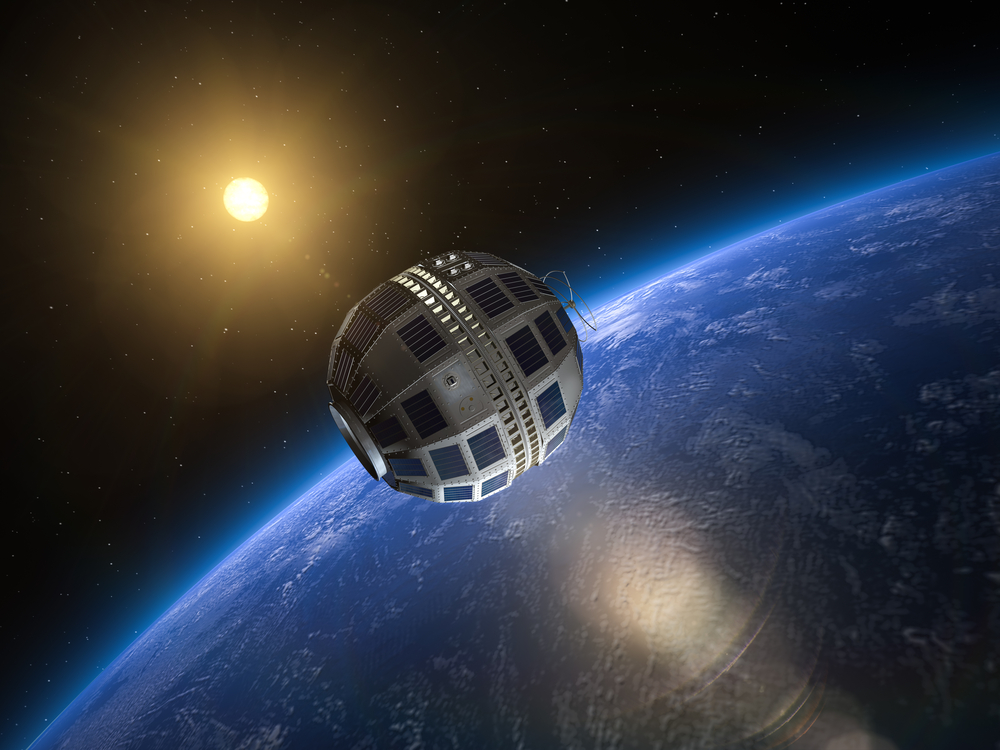Your cart is currently empty!
Historical Milestones
Back to: Communications Satellites Connecting the World
Overview
This lesson traces the evolution of communication satellites, highlighting key milestones that have shaped their development and transformed global communication. From the launch of Sputnik to modern satellite constellations like Starlink, participants will explore how each breakthrough has influenced the way we connect, navigate, and share information across the globe.
Learning Objectives:
By the end of this lesson, participants will:
- Appreciate the innovations that paved the way for modern satellite systems.
- Understand the historical progression of communication satellite technology.
- Identify pivotal moments in the development of satellite communication.
- Analyze the impact of key milestones on global connectivity.
The Birth of Satellite Communication
Sputnik 1: A New Era

In 1957, the Soviet Union launched Sputnik 1, a small, beeping sphere that marked the dawn of the space age. While weighing just 83.6 kilograms, Sputnik’s significance was monumental. It demonstrated humanity’s ability to place an object in orbit, igniting a global fascination with space exploration and technology. Though not designed for communication, Sputnik’s success catalyzed efforts worldwide to develop satellites for practical purposes, setting the stage for transformative advancements.
Sputnik’s geopolitical implications were profound. The launch heightened Cold War tensions, prompting the United States to accelerate its space initiatives. The resulting “space race” spurred unprecedented investment in research, laying the groundwork for both communication satellites and broader technological innovation.
Telstar 1: The First Communication Satellite

In 1962, the U.S. launched Telstar 1, a groundbreaking satellite that enabled live transatlantic television broadcasts. Yes, it does look like the Death Star if you watched Star Wars. For the first time, viewers in Europe and North America could watch the same events simultaneously, including images of the Statue of Liberty. This achievement bridged continents, showcasing the immense potential of satellite communication.
Telstar’s legacy extends beyond its technical feats. It demonstrated the commercial viability of satellites, attracting global interest from governments and private companies alike. Telstar paved the way for further innovations, proving that satellites could reshape how the world shares information.
The Advent of Geostationary Satellites
Arthur C. Clarke’s Vision Realized
The concept of geostationary satellites, theorized by Arthur C. Clarke, became a reality with Syncom 2 in 1963. Positioned 35,786 kilometers above the equator, Syncom 2 remained fixed relative to a point on Earth, enabling continuous communication with specific regions. This capability revolutionized telecommunications, allowing for stable, reliable broadcasting and data transfer.
Clarke’s vision highlighted the potential for a global communication network powered by geostationary satellites. This concept would become the backbone of international telecommunications, supporting everything from telephone services to live television coverage of global events like the Olympics.
Intelsat I: A Commercial Revolution

In 1965, Intelsat I, also known as “Early Bird,” became the first commercial communication satellite. It provided consistent transatlantic telephone and television services, proving that satellites could support large-scale, profitable ventures. Intelsat I’s success led to the establishment of a global satellite network, connecting continents and enabling seamless communication across vast distances.
By fostering international collaboration, Intelsat I underscored the role of satellites in promoting economic growth and cultural exchange. Its influence is still felt today, as modern networks continue to build on its pioneering framework.
Expansion of Satellite Applications
Weather Monitoring
The launch of TIROS-1 in 1960 revolutionized meteorology. As the first weather satellite, TIROS-1 captured images of Earth’s cloud cover, enabling meteorologists to track storms and improve forecasting accuracy. This capability has since evolved into a global network of weather satellites that monitor climate patterns, predict hurricanes, and provide data critical for disaster response.
Today, satellites like GOES (Geostationary Operational Environmental Satellite) play a vital role in climate research, offering insights into global warming and its effects. These systems exemplify how satellite technology extends beyond communication to address broader scientific and humanitarian needs.
Navigation Systems
In the 1970s, the U.S. Department of Defense initiated the Navstar GPS program, creating a network of satellites that transformed navigation. GPS satellites provide precise location data, enabling advancements in travel, logistics, agriculture, and emergency response. From guiding airplanes to optimizing delivery routes, GPS technology has become indispensable in daily life.
The evolution of navigation systems continues with next-generation satellites offering even greater accuracy and coverage. These innovations demonstrate the adaptability of satellite technology to meet emerging demands.
Military and Defense Applications

Satellites have long been integral to military strategy. Systems like Milstar provide secure communication channels, ensuring reliability even during conflicts. Reconnaissance satellites enable real-time surveillance, offering critical intelligence for national security.
Beyond defense, these technologies have dual-use applications, supporting disaster management, search-and-rescue missions, and scientific exploration. The versatility of satellites underscores their enduring importance in both peace and conflict.
Modern Satellite Constellations
The Era of LEO Constellations
The 21st century witnessed a paradigm shift with the rise of low Earth orbit (LEO) constellations. Unlike traditional geostationary satellites, LEO satellites operate closer to Earth, reducing latency and improving data speeds. Companies like SpaceX and OneWeb have deployed networks comprising thousands of small satellites, aiming to deliver high-speed internet worldwide.
LEO constellations represent a new chapter in satellite technology. By increasing accessibility and affordability, these systems bridge the digital divide, connecting underserved regions and empowering communities. However, their rapid proliferation also raises concerns about space congestion and sustainability.
Starlink: Bridging the Digital Divide

Starlink, developed by SpaceX, exemplifies the potential of LEO constellations. With thousands of satellites already in orbit, Starlink provides high-speed internet to remote and rural areas, transforming access to information and services. This initiative highlights the transformative power of satellites to address global inequalities.
Yet, Starlink’s impact extends beyond connectivity. It has sparked debates on space governance, emphasizing the need for international collaboration to manage orbital resources responsibly. As LEO constellations grow, balancing innovation with sustainability will be crucial.
Reflection and Discussion
To deepen your understanding of historical milestones, consider the following:
- Analyze the transition from individual satellites to large constellations. How has this evolution influenced accessibility and affordability in global communication?
- How did the launch of Sputnik alter global perceptions of space and technology? Discuss its geopolitical and technological implications.
- In your opinion, which milestone in satellite communication has had the most significant impact on society? Reflect on the reasons for your choice.
Copyright 2024 MAIS Solutions, LLC All Rights Reserved
